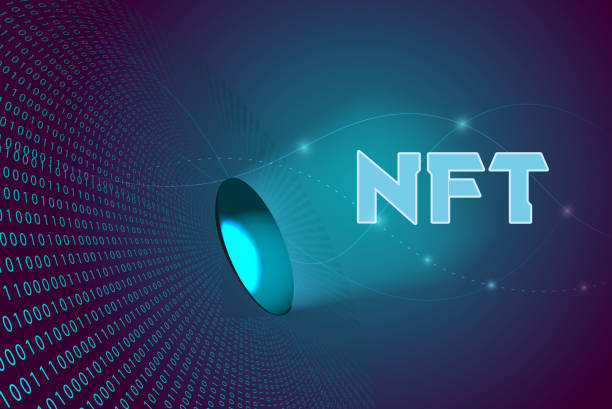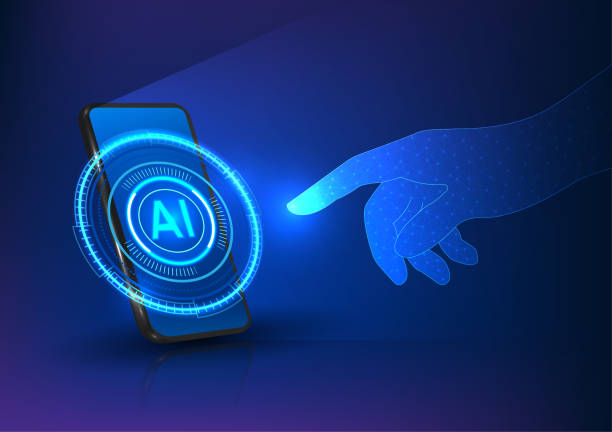What is an AI Assistant and How Does it Work?

#An AI Assistant (Artificial Intelligence Assistant) is a tool that uses artificial intelligence to perform various tasks, provide information, and answer questions.
These assistants can exist as software or hardware and can be integrated into various devices such as smartphones, computers, and smart home devices.
The general working mechanism of an AI assistant involves the following steps:
- Input Reception: The AI assistant receives input via voice, text, or image.
- Natural Language Processing (NLP): The received input is processed by NLP models to extract its meaning and context.
Natural Language Processing enables computers to understand and interpret human language. - Understanding User Intent: The system attempts to identify the user’s goal and need from the input.
This stage includes recognizing user commands, questions, or requests. - Information Retrieval and Response Generation: Based on user intent, the system searches for the necessary information.
This information can be extracted from various sources such as databases, the internet, or the system’s internal knowledge. - Response Delivery: A suitable response is provided to the user.
This response can be in the form of text, voice, image, or a combination thereof.
AI assistants use Machine Learning algorithms to improve their performance.
Over time, and with more data received, their accuracy and efficiency increase.
Famous examples of AI assistants include Siri, Google Assistant, and Alexa.
AI assistants have various applications, including answering questions, managing tasks, controlling smart devices, providing suggestions and recommendations, and performing financial transactions.
These tools are increasingly present in our daily lives and are expected to play a more significant role in the future.
Does your current website showcase your brand’s credibility as it should? Or does it drive potential customers away?
Rasaweb, with years of experience in designing professional corporate websites, is your comprehensive solution.
✅ A modern, beautiful website tailored to your brand identity
✅ Significant increase in lead generation and new customers
⚡ Contact Rasaweb now for a free consultation on corporate website design!
Exploring Types of AI Assistants

AI assistants can be categorized based on various criteria.
One of the most common methods is categorization based on platform and access method:
- Voice Assistants: These types of assistants are controlled via voice and are typically found in devices such as smartphones, smart speakers, and cars.
Famous examples include Siri, Google Assistant, Alexa, and Cortana. - Text-based Assistants: These assistants interact with users via text and are typically found in messaging apps, websites, and applications.
Chatbots are an example of this type of assistant. - Visual Assistants: These types of assistants interact with users via images and can identify objects, provide information about them, and execute commands based on images.
- Hardware Assistants: These assistants exist as physical devices and are usually designed to perform specific tasks.
Home robots are an example of this type of assistant.
Additionally, AI assistants can also be categorized based on their application and the tasks they perform:
- Personal Assistants: These assistants are designed to help users with daily tasks such as time management, appointment reminders, email responses, and information retrieval.
- Virtual Assistants: These assistants are designed to help businesses with various tasks such as customer support, marketing, and sales.
- Specialized Assistants: These assistants are designed to perform specific tasks in various fields such as medicine, education, and engineering.
Given the continuous advancements in AI, new types of AI assistants with more diverse capabilities and applications are expected to enter the market.
Choosing the appropriate type of AI assistant depends on the user’s needs and preferences.
Choosing the right AI assistant can increase productivity and efficiency.
Advantages and Disadvantages of Using an AI Assistant

Using an AI assistant has several advantages and disadvantages that should be considered before using these tools.
Advantages
- Increased Productivity: AI assistants can automate repetitive and time-consuming tasks, which increases user productivity.
- Easy Access to Information: AI assistants can quickly and easily access information needed by users.
- 24/7 Support: AI assistants can be available 24 hours a day, 7 days a week, and respond to user questions and requests.
- Reduced Errors: AI assistants can perform tasks with greater accuracy than humans, which leads to a reduction in errors.
- Personalization: Many AI assistants offer personalization capabilities and can be configured according to each user’s needs and preferences.
Disadvantages
- Privacy: The collection and use of user data by AI assistants can raise privacy concerns.
- Security: AI assistants may be vulnerable to cyberattacks, compromising user information.
- Dependency: Excessive use of AI assistants can lead to user dependency on these tools and reduce their problem-solving skills.
- Cost: Some AI assistants come with a high cost and may not be accessible to all users.
- Limitations: AI assistants still have limitations in understanding and responding to complex and ambiguous questions.
Ultimately, the decision to use an AI assistant should be based on a careful evaluation of its advantages and disadvantages, taking into account the specific needs and circumstances of each user.
Carefully review the advantages and disadvantages of AI.
| Advantages | Description |
|---|---|
| Increased Productivity | Automated performance of repetitive and time-consuming tasks |
| Easy Access to Information | Quick and easy access to required information |
| 24/7 Support | Availability 24 hours a day, 7 days a week |
Applications of AI Assistants in Daily Life

AI assistants have numerous applications in daily life and can help users with various tasks:
- Time Management: AI assistants can help users manage their time.
They can remind of appointments, create to-do lists, and schedule activities. - Answering Questions: AI assistants can answer user questions.
They can search for information on various topics, check facts, and answer specialized questions. - Controlling Smart Devices: AI assistants can control smart devices.
They can turn lights on and off, adjust thermostat temperatures, and play music. - Providing Suggestions and Recommendations: AI assistants can offer suggestions and recommendations to users.
They can suggest movies, music, books, and restaurants based on user interests and preferences. - Performing Financial Transactions: AI assistants can perform financial transactions.
They can make payments, send transfers, and check account balances.
Furthermore, AI assistants are also used in other fields such as education, healthcare, transportation, and entertainment.
For example, they can help students learn course material, assist doctors in diagnosing illnesses, and aid drivers with navigation.
Everyday applications of AI are expanding daily.
AI assistant is an emerging technology with great potential to improve our quality of life.
With continuous advancements in AI, the applications of these tools are expected to become more extensive and diverse in the future.
Did you know that your company’s website is the first point of contact for 75% of potential customers?
Your website is the face of your brand. With **Rasaweb**’s professional corporate website design services, build an online presence that earns customer trust.
✅ Create a professional and lasting brand image
✅ Attract target customers and increase online credibility
⚡ Get a free consultation from **Rasaweb** experts!
How to Choose the Right AI Assistant

Choosing the right AI assistant can be challenging, as there are various options available in the market.
To select the best option, several factors must be considered:
- Needs and Preferences: The first step in choosing the right AI assistant is to determine your personal needs and preferences.
You need to specify what you expect from the AI assistant and what tasks you want to assign to it. - Compatibility: The AI assistant must be compatible with your devices and platforms.
For example, if you use an Android smartphone, you should choose an AI assistant that is compatible with this operating system. - Features and Capabilities: Different AI assistants have different features and capabilities.
You should review the features and capabilities of each assistant and ensure they match your needs. - Privacy and Security: The privacy and security of personal information are very important.
You should choose an assistant with strong privacy policies that protects your information. - Price: Different AI assistants have different prices.
You should consider your budget and choose an assistant that is compatible with it.
Additionally, you can read reviews and experiences of other users regarding different AI assistants.
This will help you gain a better understanding of the performance and quality of each assistant.
The AI assistant selection guide can help you in this process.
The right AI assistant can make your life easier and more efficient.
By taking enough time to research and review different options, you can choose the best one for yourself.
Comparison of Popular AI Assistants in the Market

Currently, there are several popular AI assistants in the market, each with its own unique features and capabilities.
Here, we compare some of these assistants:
- Google Assistant: Google Assistant is one of the most popular AI assistants, available on Android devices, smart speakers, and other devices.
This assistant has extensive capabilities, including answering questions, managing tasks, controlling smart devices, and providing suggestions. - Siri: Siri is Apple’s AI assistant, available on iOS, macOS, and watchOS devices.
Siri also has similar capabilities to Google Assistant, but focuses more on user privacy. - Alexa: Alexa is Amazon’s AI assistant, available on Echo smart speakers and other devices.
Alexa is primarily used for controlling smart devices and online shopping. - Cortana: Cortana is Microsoft’s AI assistant, available on Windows 10 and other devices.
Cortana is primarily used for task management and providing information.
The table below provides a comparison of the key features of these assistants:
| AI Assistant | Platforms | Features | Privacy |
|---|---|---|---|
| Google Assistant | Android, iOS, Smart Speakers | Answering questions, task management, smart device control | Data collection |
| Siri | iOS, macOS, watchOS | Answering questions, task management, smart device control | Focus on privacy |
| Alexa | Smart Speakers, Other Devices | Smart device control, online shopping | Data collection |
Choosing the best AI assistant depends on your needs and preferences.
If you are looking for an assistant with extensive capabilities, Google Assistant is a good option.
If privacy is important to you, Siri is a better choice.
And if you are looking for an assistant to control smart devices, Alexa is a suitable option.
Comparing AI assistants can help you make a better choice.
Important Tips for Protecting Privacy When Using an AI Assistant

Protecting privacy is crucial when using an AI assistant, as these tools collect and store your personal information.
To protect your privacy, you can take the following steps:
- Review Privacy Policies: Before using an AI assistant, carefully read its privacy policies.
Ensure that you agree with how your information is collected and used. - Privacy Settings: Many AI assistants allow you to change your privacy settings.
Use these settings to limit the amount of information collected. - Disable Unnecessary Features: Some AI assistant features may collect your personal information.
Disable unnecessary features. - Clear History: Regularly clear your activity history in the AI assistant.
This will result in less information being stored about you. - Use Strong Passwords: Use a strong password for your AI assistant account.
This will prevent unauthorized access to your information.
Additionally, be mindful of what information you share with the AI assistant.
Avoid sharing sensitive information such as passwords, financial data, and personal details.
Protecting privacy in AI requires awareness and preventative measures.
AI assistant is a powerful tool, but it should be used with caution.
By observing safety tips and protecting your privacy, you can benefit from this tool without compromising your personal information.
The Future of AI Assistants and Their Impact on Our Lives

The future of AI assistants is very bright, and these tools are expected to play a more significant role in our lives.
With continuous advancements in AI, AI assistants will be able to perform more complex tasks and respond to user needs more effectively.
- More Advanced Capabilities: In the future, AI assistants will be able to understand human language more naturally, detect emotions, and provide more personalized responses.
- Integration with More Devices: AI assistants will be integrated into more devices, including cars, home appliances, and wearables.
- New Applications: AI assistants will find applications in new fields such as healthcare, education, and transportation.
- Impact on the Job Market: AI assistants may automate some jobs but will also create new ones.
The impact of AI assistants on our lives will be very extensive.
These tools can increase our productivity, make our access to information easier, and help us with daily tasks.
However, we must also pay attention to the challenges arising from the use of these tools, including issues related to privacy, security, and the impact on the job market.
The future of AI requires strategic thinking and planning.
AI assistant is a transformative technology with great potential to improve our quality of life.
By using these tools responsibly and consciously, we can benefit from their advantages and prevent potential risks.
Did you know that your company’s website is the first point of contact for 75% of potential customers?
Your website is the face of your brand. With **Rasaweb**’s professional corporate website design services, build an online presence that attracts customer trust.
✅ Create a professional and lasting brand image
✅ Attract target customers and increase online credibility
⚡ Get a free consultation from **Rasaweb** experts!
How to Build an AI Assistant

Building an AI assistant can be an engaging and challenging project.
For this, you need specific knowledge and skills in artificial intelligence, programming, and natural language processing.
Here, we outline the general steps for building an AI assistant:
- Define the Goal: First, you need to specify your goal for building the AI assistant.
What tasks do you want to assign to it? What features do you want it to have? - Choose a Platform: You need to select a suitable platform for developing your AI assistant.
Various options exist, including Python, TensorFlow, Dialogflow, and Rasa. - Data Collection: To train AI models, you need a large amount of data.
This data can include text, voice, and images. - Model Training: Using the collected data, you need to train your AI models.
These models are responsible for understanding human language, answering questions, and performing tasks. - Testing and Evaluation: After training the models, you need to test and evaluate them.
This helps you identify issues and deficiencies in the models and improve them. - Deployment: After testing and evaluation, you can deploy your AI assistant.
This can involve publishing it on a website, mobile application, or smart device.
Building an AI assistant is a complex and time-consuming process.
To succeed in this project, you need patience, perseverance, and sufficient knowledge.
The guide to building an AI assistant can help you on this path.
AI assistant is a complex technology, but with effort and perseverance, you can build a personalized AI assistant that meets your needs.
Educational Resources for Learning About AI Assistants

If you are interested in learning about AI assistants, numerous educational resources are available to you:
- Online Courses: Various websites offer online educational courses in the field of AI and AI assistants.
These courses can help you learn basic and advanced concepts. - Books: Many books are available on artificial intelligence and natural language processing.
These books can help you gain a deeper understanding of the concepts and algorithms used in AI assistants. - Scientific Articles: Many scientific articles are published in the field of AI assistants.
Reading these articles can help you stay up-to-date with the latest advancements in this field. - Blogs and Websites: Many blogs and websites are dedicated to the topic of AI assistants.
These resources can provide useful information about the applications, advantages, and disadvantages of these tools. - Online Forums and Groups: Many online forums and groups exist for AI and AI assistants.
Joining these forums can help you connect with other enthusiasts and experts.
By utilizing these educational resources, you can enhance your knowledge and skills in the field of AI assistants and become an expert in this area.
There are abundant AI educational resources available to start learning.
AI assistant is an exciting and growing field.
With sufficient time and effort, you can achieve success in this area.
Frequently Asked Questions
| No. | Question | Answer |
|---|---|---|
| 1 | What is an AI assistant? | An AI assistant is a software program that uses artificial intelligence to help users perform various tasks, provide information, or automate processes. |
| 2 | What are examples of AI assistants? | Famous examples include Siri, Google Assistant, Alexa, and Cortana. |
| 3 | How does an AI assistant work? | AI assistants typically use Natural Language Processing (NLP) to understand user voice or text commands and Machine Learning to improve their performance. |
| 4 | What capabilities does it have? | Capabilities include answering questions, setting reminders, playing music, sending messages, controlling smart devices, and providing weather information. |
| 5 | How is data security in AI assistants? | Data security is an important concern. Companies strive to protect user data using encryption and privacy policies, but users should always be aware of potential risks. |
| 6 | Can AI assistants understand emotions? | Currently, AI assistants cannot understand true emotions, but they can detect tone and words related to emotions and provide appropriate responses. |
| 7 | What are the applications of AI assistants in the workplace? | In the workplace, they can be used for scheduling meetings, managing emails, searching for information, and even assisting with drafting documents. |
| 8 | What will be the future of AI assistants? | In the future, they are expected to be smarter, more personalized, and have more capabilities, actively anticipating user needs and even assisting in complex decision-making. |
| 9 | What is the difference between an AI assistant and a chatbot? | An AI assistant typically has a wider range of capabilities and interactions (often voice-based), whereas chatbots usually focus on specific tasks within a text-based platform. |
| 10 | How can one best use an AI assistant? | For optimal use, one should become familiar with its voice commands and capabilities, synchronize it with other devices, and allow it to learn your usage patterns through interactions. |
And other advertising services from Rasaweb Advertising Agency:
- Smart SEO: Revolutionize click-through rates with the help of attractive UI design.
- Smart SEO: A novel service to increase user engagement through attractive UI design.
- Smart Advertising Campaign: A creative platform to improve customer acquisition with user experience customization.
- Smart Customer Journey Map: A combination of creativity and technology for campaign management through custom programming.
- Smart Conversion Rate Optimization: An effective tool for digital branding with the help of custom programming.
And over a hundred other services in the field of internet advertising, advertising consulting, and organizational solutions.
Internet Advertising | Advertising Strategy | Advertorials
Resources
- Comprehensive Guide to AI Assistants (ChatGPT and more)
- Best AI Assistants: Which One Is Right for You?
- The Impact of AI Assistants on the Future of Work and Life
- How to Use an AI Assistant Effectively?
? Rasaweb Afarin, a leading digital marketing agency, paves the way for your business’s success. From professional e-commerce website design to comprehensive SEO strategies, we are ready to distinguish your brand in the online space and bring it to its peak.
📍 Tehran, Mirdamad Street, next to Bank Markazi, Southern Kazeroun Alley, Ramin Alley, No. 6




